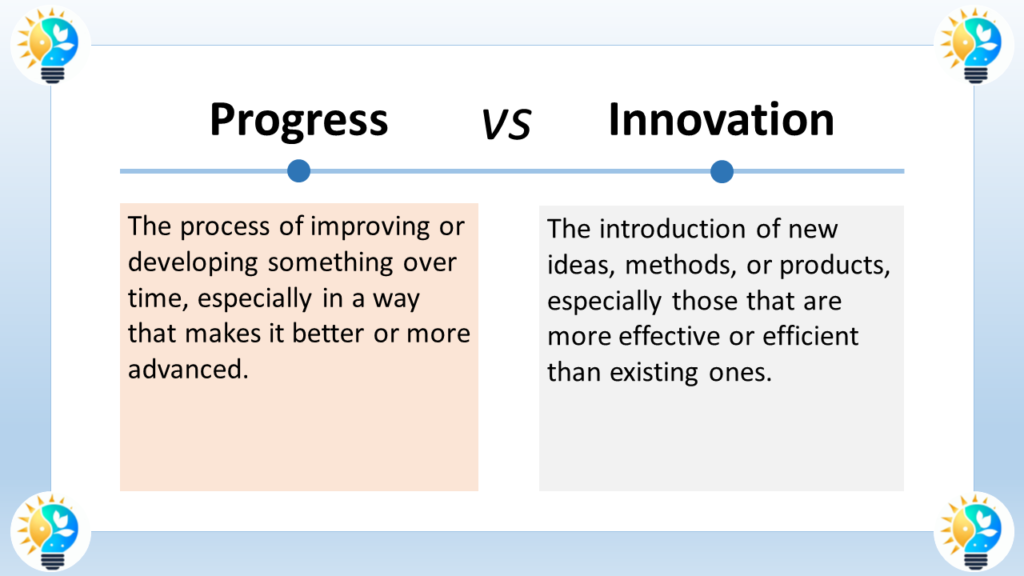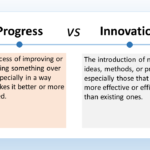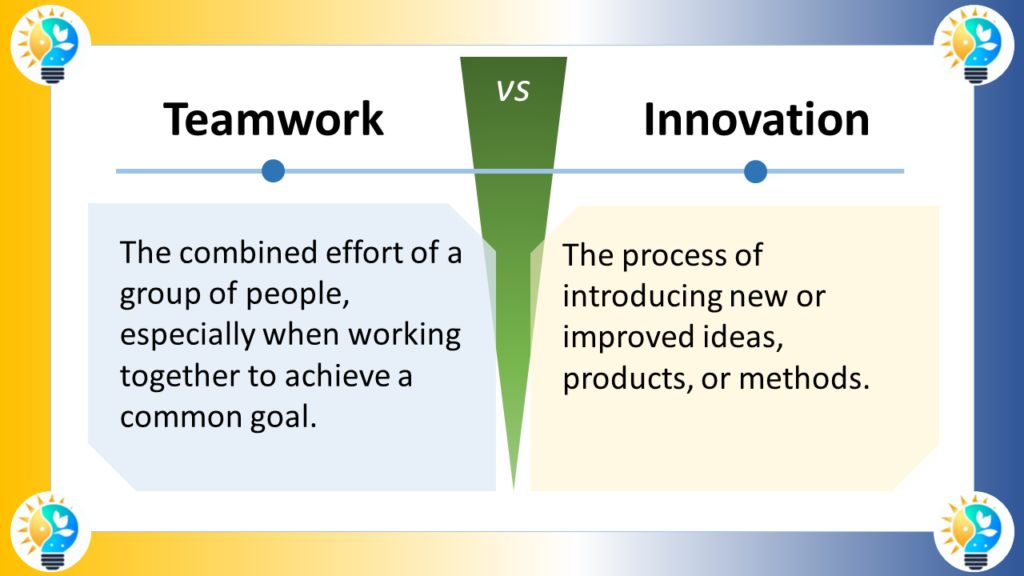
Innovation refers to the creation of new ideas, products, or processes, while progress refers to the advancement or improvement of something.
The two concepts are interconnected, as innovation often leads to progress, and progress can inspire innovation.
Progress involves the gradual improvement or development of something over time, often resulting in advancements or enhancements.
The relationship between innovation and progress is a fascinating one.
Definitions
Innovation refers to the creation of new ideas, products, or processes that add value and solve problems. It involves thinking creatively and taking risks to develop new solutions that are better than existing ones.
Progress
Progress refers to the advancement or improvement of something over time. It can be measured in various ways, including economic growth, technological development, social progress, and environmental sustainability. Progress is often associated with positive change, such as improved living standards, increased knowledge and understanding, and greater freedom and opportunity.
More Synonyms on innovation, innovate and innovative
Innovation Terms

Innovation is considered as a driving force in progress.
It includes the introduction of novel ideas, methods, or products that bring positive change and advancement.
For more information about innovations, check our glossary
The difference between Progress and Innovation
The difference between progress and innovation lies in their nature and direction. Progress refers to the gradual improvement or advancement of something, always in the same direction. On the other hand, innovation refers to the introduction of something new and different, always in a new direction. In other words, progress is a continuation of what has come before, while innovation is a departure from the norm. Innovation is considered a driving force in progress, as it involves the introduction of novel ideas, methods, or products that bring positive change. Therefore, while progress is about improvement and advancement, innovation is about creating and introducing new ideas, products, or processes.
The Role of Innovation in Progress
Innovation is a key driver of progress. It allows us to solve problems, improve efficiency, and create new opportunities. Without innovation, progress would be much slower, if not impossible. Here are some examples of how innovation has led to progress:
- The invention of the steam engine in the 18th century revolutionized transportation and manufacturing, making it possible to produce goods on a much larger scale.
- The development of antibiotics in the 20th century has saved countless lives and improved public health around the world.
- The creation of the internet has transformed the way we communicate, do business, and access information.
In each of these cases, innovation has led to significant progress.
Innovation can take many forms, including technological, social, and organizational.
Technological innovation involves the development of new products or processes that are based on scientific or technical knowledge. Social innovation involves the creation of new solutions to social challenges, such as poverty, inequality, and environmental sustainability. Organizational innovation involves the development of new ways of organizing work, management, and decision-making processes.
The Importance of Progress for Innovation
While innovation can lead to progress, progress can also inspire innovation. When we see improvements in our lives, we often become motivated to make even more progress. Here are some ways that progress can inspire innovation:
- Improved technology can create new opportunities for innovation. For example, advances in computer technology have led to the development of new software, apps, and platforms.
- Progress in one field can inspire innovation in another. For example, advances in medical research can lead to new treatments and therapies, which can inspire innovation in related fields, such as biotechnology and pharmaceuticals.
- Progress can create new challenges that require innovative solutions. For example, as we become more reliant on technology, we face new challenges related to cybersecurity and privacy, which require innovative solutions.
However, progress is not always positive, and it can have negative consequences, such as environmental degradation, inequality, and social unrest.
The Role of Innovation in Economic Growth
Innovation is also essential for economic growth. When companies introduce new products or processes, they often create new jobs and generate new revenue streams. This can lead to economic growth and prosperity.
One example of this is the technology sector. Companies like Apple, Google, and Amazon have created new products and services that have revolutionized the way we live and work. In the process, they have created millions of jobs and contributed significantly to economic growth.
The Importance of Encouraging Innovation
Given the role that innovation plays in progress and economic growth, it is essential that we encourage and support innovation. This can be done in several ways:
- Investing in research and development: Companies and governments can invest in research and development to support the creation of new ideas and technologies.
- Encouraging entrepreneurship: Entrepreneurs are often the drivers of innovation, as they are willing to take risks and pursue new ideas. Encouraging entrepreneurship can help to create a culture of innovation.
- Providing access to education and training: Providing access to education and training can help individuals develop the skills and knowledge necessary to innovate.
- Creating a supportive regulatory environment: Governments can create a regulatory environment that encourages innovation by reducing barriers to entry and providing incentives for innovation.
Progressive vs. Innovative: Understanding the Difference
When distinguishing between "progressive" and "innovative," it is essential to grasp their nuanced meanings. Progressive typically denotes gradual improvement or advancement, emphasizing continuous development in a particular field, often with a focus on social or political change. For instance, in politics, being progressive signifies advocating for social reform and positive societal changes through government intervention.
On the other hand, innovative refers to introducing new and original ideas or methods, highlighting creativity and uniqueness in creating something that is novel and inventive. Innovation is commonly associated with technological advancements, scientific discoveries, and disruptive changes in various fields like business and art.
Using the Terms in Context
- Business: In the business realm, a progressive company evolves and adapts to new trends, while an innovative company creates entirely new and disruptive products or services.
- Education: A progressive approach in education involves incorporating new technologies and teaching methods, whereas an innovative approach entails creating entirely new teaching paradigms.
- Politics: In politics, progressive policies aim to enhance the lives of marginalized communities, while innovative policies introduce entirely new and untested approaches.
Exceptions and Contextual Usage
While these distinctions are generally clear-cut, there are exceptions where industry-specific terminology may alter their meanings. Understanding the context in which these terms are used is crucial for making informed decisions about whether to use "progressive" or "innovative".
In summary, while both terms have their place in driving positive change, progressive signifies gradual improvement and social change, whereas innovative denotes originality and creativity in introducing new ideas or methods.
From Change To Progress, Animated quote
Conclusion
The relationship between innovation and progress is a symbiotic one. Innovation often leads to progress, and progress can inspire innovation. By encouraging and supporting innovation, we can drive progress and economic growth. Whether it's through investing in research and development, encouraging entrepreneurship, providing access to education and training, or creating a supportive regulatory environment, there are many ways that we can foster a culture of innovation and drive progress forward.
References
- Innovation vs. Progress: Are We Losing Sight of What Really Matters?
- Innovation is About Making Progress, Not Running Experiments
- What is Innovation?
- What is the Difference Between Progression and Innovation?
- HiNative - Difference between "innovative" and "progressive"
- The Content Authority - Progressive vs Innovative
- Wikidiff - Progressive vs Innovative
- Ask Difference - Progressive vs Innovative
- Thesaurus Plus - Related: Innovative vs Progressive


